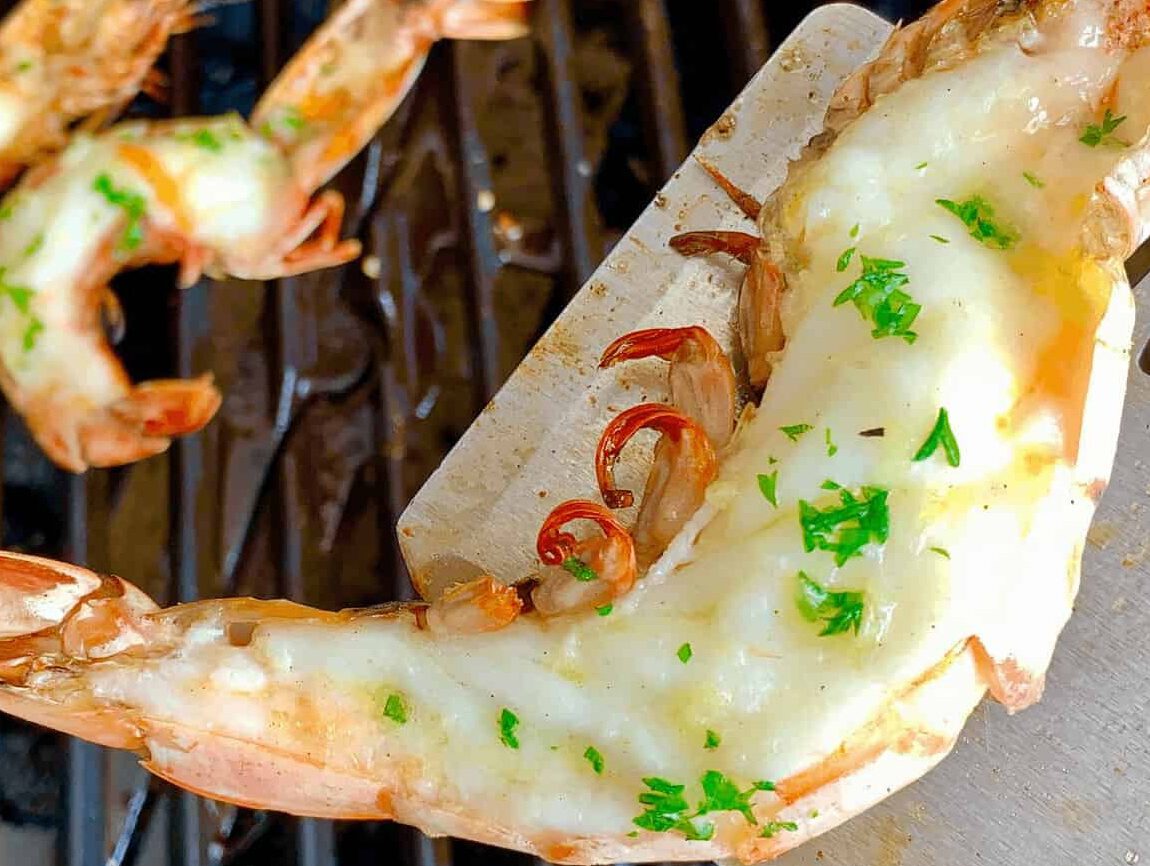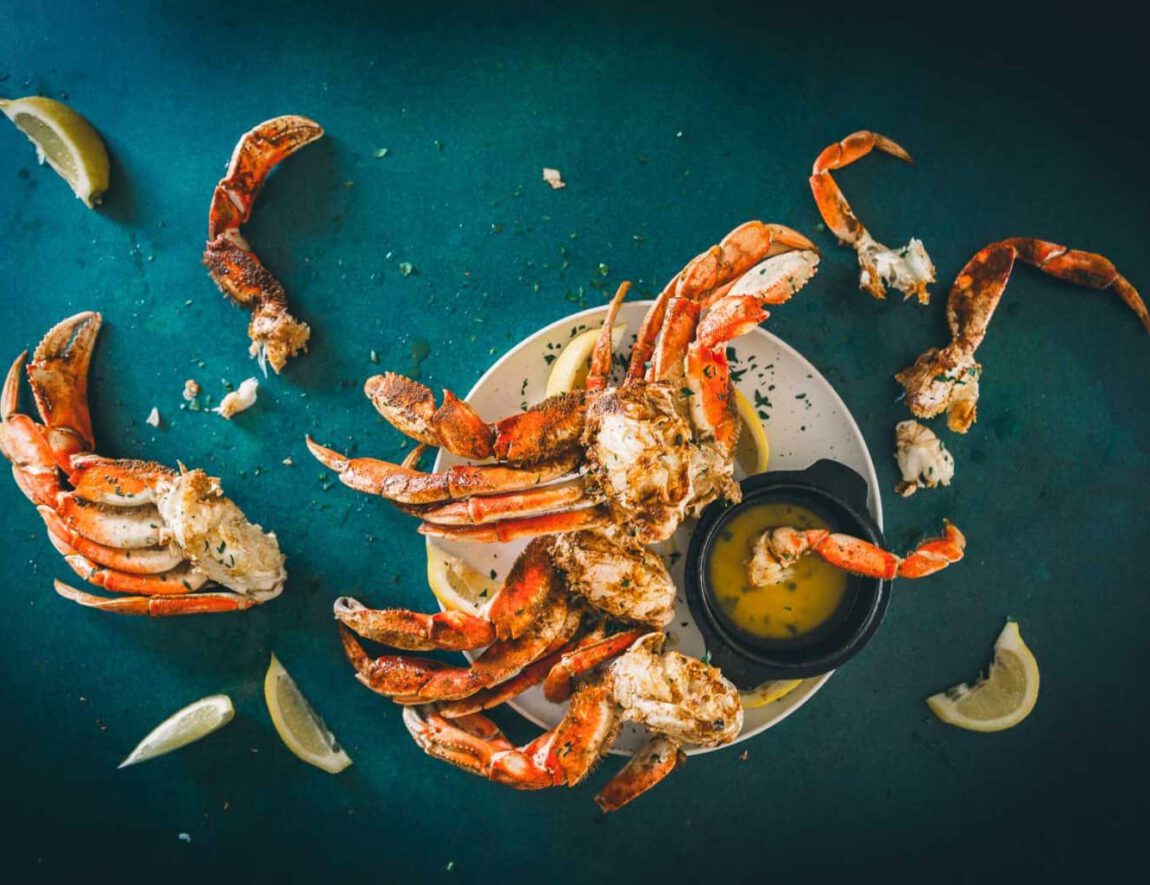
Lobsters are fascinating crustaceans that thrive in the marine environments of the world’s oceans. Known for their distinctive hard shells and large claws, lobsters are not only a culinary delicacy but also play an important role in their ecosystems. They are bottom-dwellers, usually found in the murky depths, where they feed on a diet of fish, mollusks, and other small sea creatures.
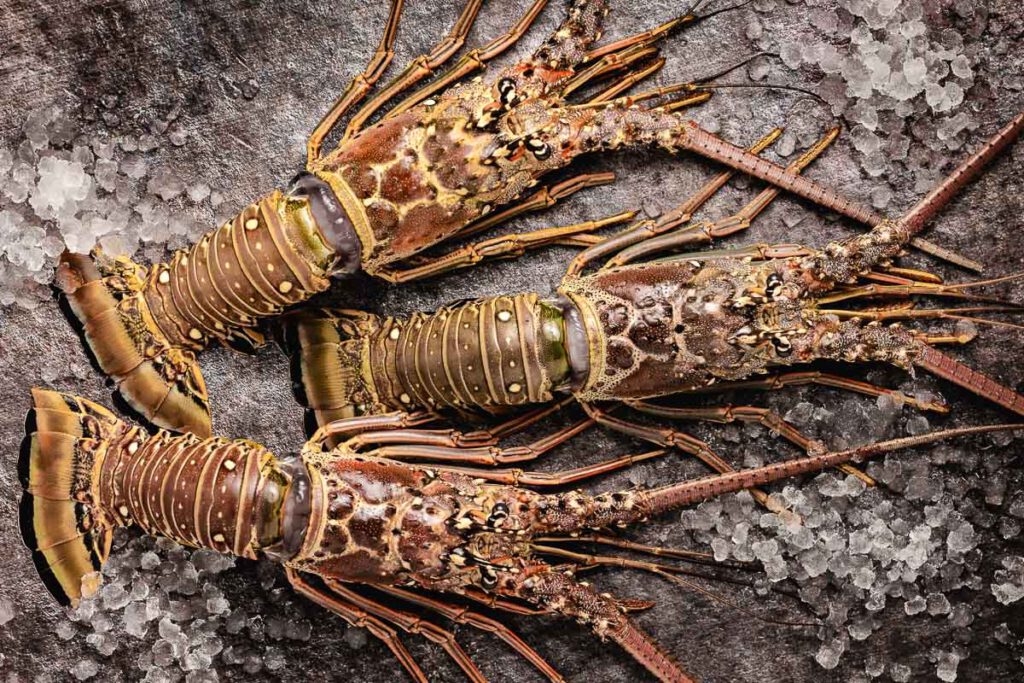
Remarkably long-lived, some species of lobsters can live for over 50 years, during which time they undergo a process called molting. Molting is when a lobster grows out of its old shell and forms a new one, which is initially soft and provides them with the room they need to grow.
Moreover, lobsters have an interesting method of communication; they release pheromones into the water to signal other lobsters and use their claws and antennae for more direct contact. These creatures also have a unique way of navigating their underwater world, using magnetic and chemical cues to find their way.
As for their reproductive cycle, female lobsters carry their eggs under their tails for up to a year before the larvae hatch, immediately facing the perilous journey of survival on their own.

Lobsters, with their intricate behavior and lifecycle, contribute to the rich tapestry of marine life and remain a subject of curiosity and respect among marine biologists and ocean lovers alike.
Types of Lobsters
Lobsters are fascinating sea creatures with several different species scattered across the ocean floors around the world. Here is an informative breakdown of some of the most well-known types of lobster:
Spiny Lobster (Panulirus argus)
A tropical lobster, the spiny lobster, which lacks large claws, can be found in warmer waters. It is known for its long, thick antennae and the spiny exoskeleton covering its body.


American Lobster (Homarus americanus)
Also known as the Maine lobster, this species is found on the East Coast of North America, from Labrador down to New Jersey. It is recognized for its large size and substantial claws that contain a lot of meat.
European Lobster (Homarus gammarus)
Similar to its American counterpart, the European lobster inhabits the waters of the North-Eastern Atlantic, from the Arctic Sea to the Azores. This species is also valued for its taste and texture.
Slipper Lobster (Scyllarides spp.)
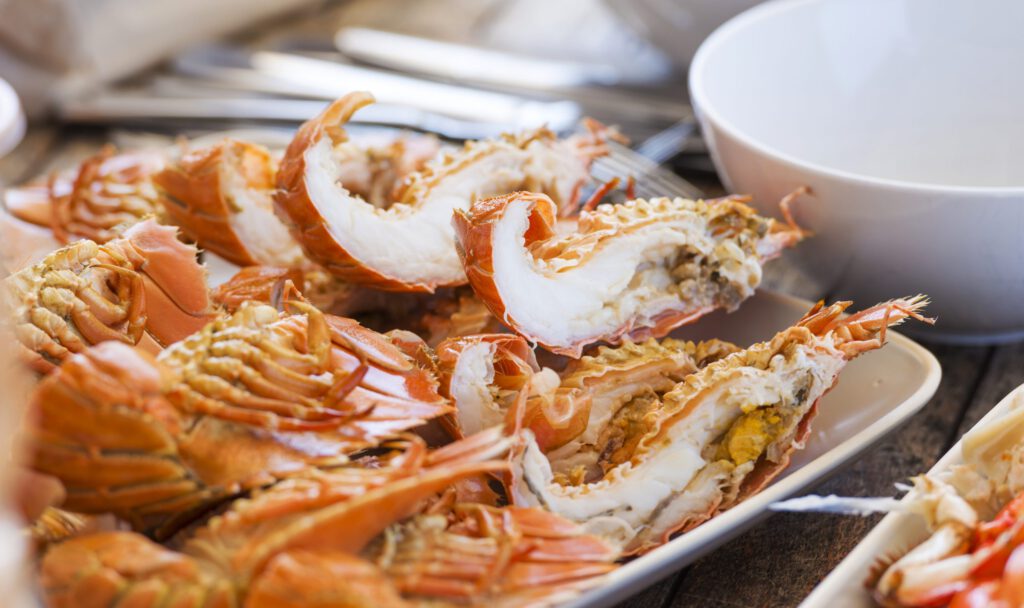
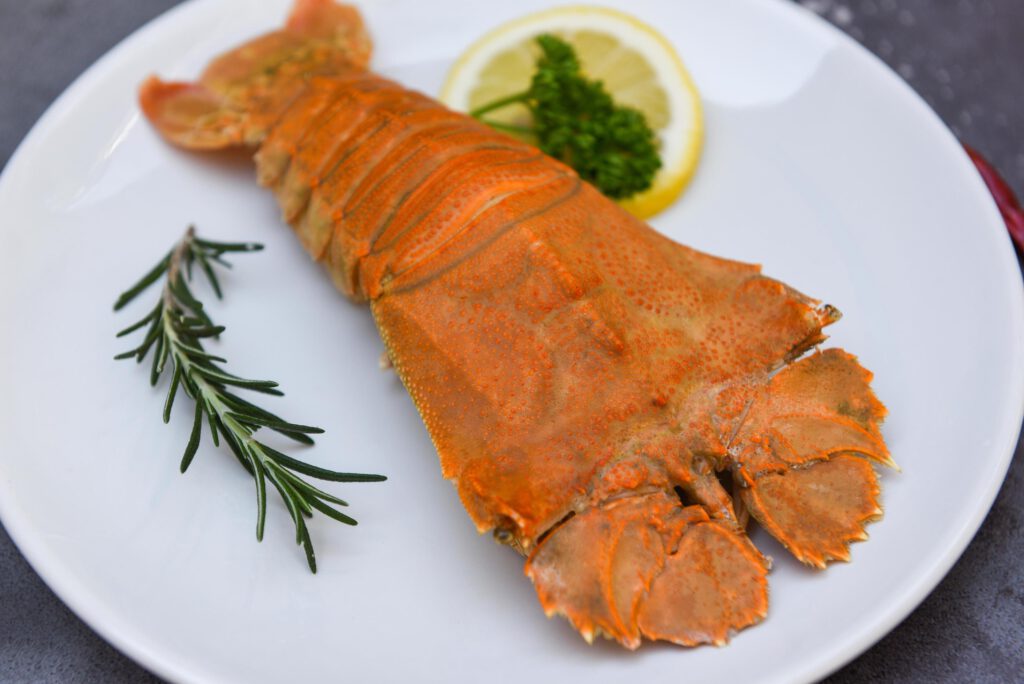
Distinctly different in appearance, slipper lobsters have a flattened body and no claws. They are found in warm oceans, primarily in the Indo-Pacific region and are considered a culinary delicacy in some cultures.
Squat Lobster (Galatheoidea)
While not true lobsters, squat lobsters are more related to hermit crabs. They have long, flattened bodies and very small abdomens. Squat lobsters are found on the sea floor worldwide, often hiding in crevices.
Reef Lobster (Enoplometopus spp.)
Known for their bright colors, often red, orange, or purple, reef lobsters can be small to medium-sized. They typically live in crevices within coral reefs in the warmer parts of the Atlantic and Pacific Oceans.
Lobsters play an essential role in marine ecosystems and are also a valuable resource for many coastal communities. They vary widely in habitat, size, and appearance, but all share a common allure both in the sea and on dinner plates around the world.
Lobster Meat
Lobster meat is a premium seafood prized for its delicate, sweet flavor and succulent texture. A versatile ingredient, it can be enjoyed in various ways — from being the highlight of a traditional lobster boil, complete with drawn butter and lemon, to being the sophisticated touch in elegant dishes such as lobster thermidor or lobster bisque.
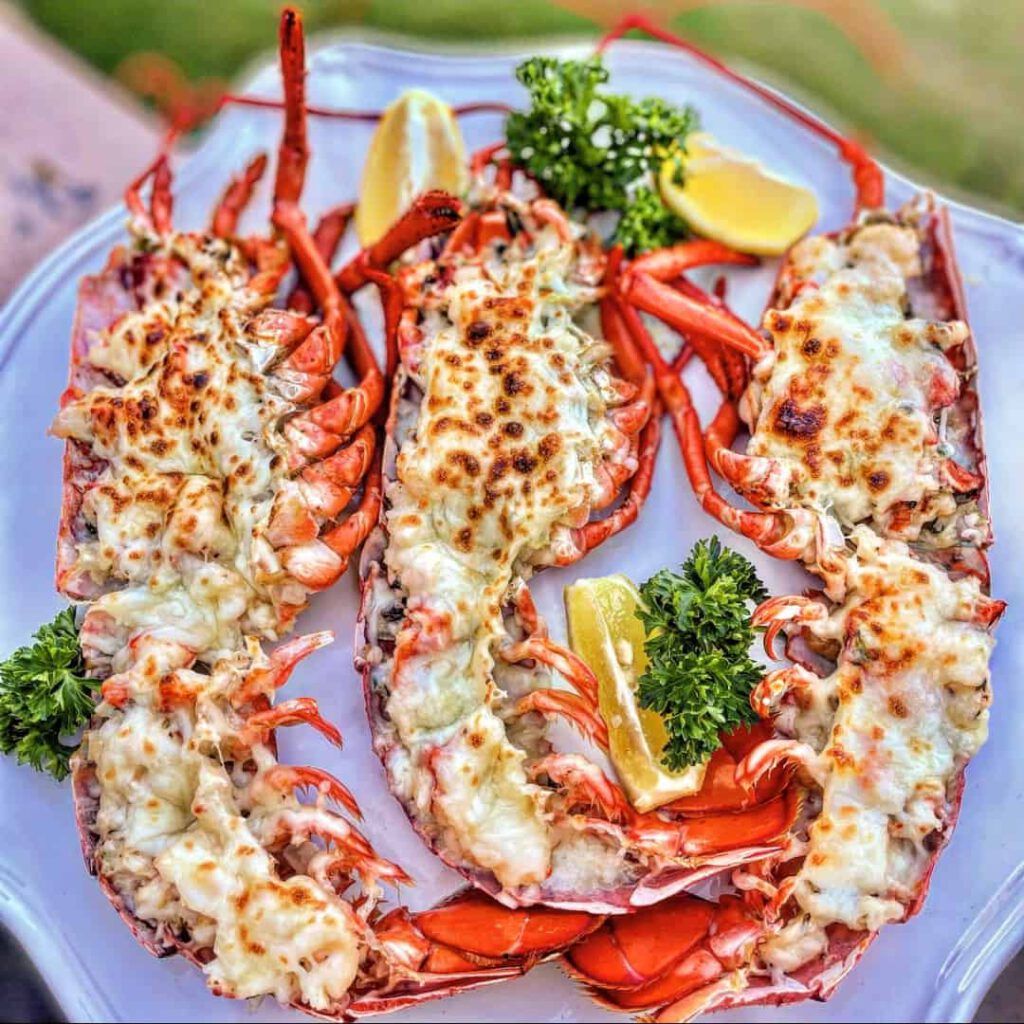
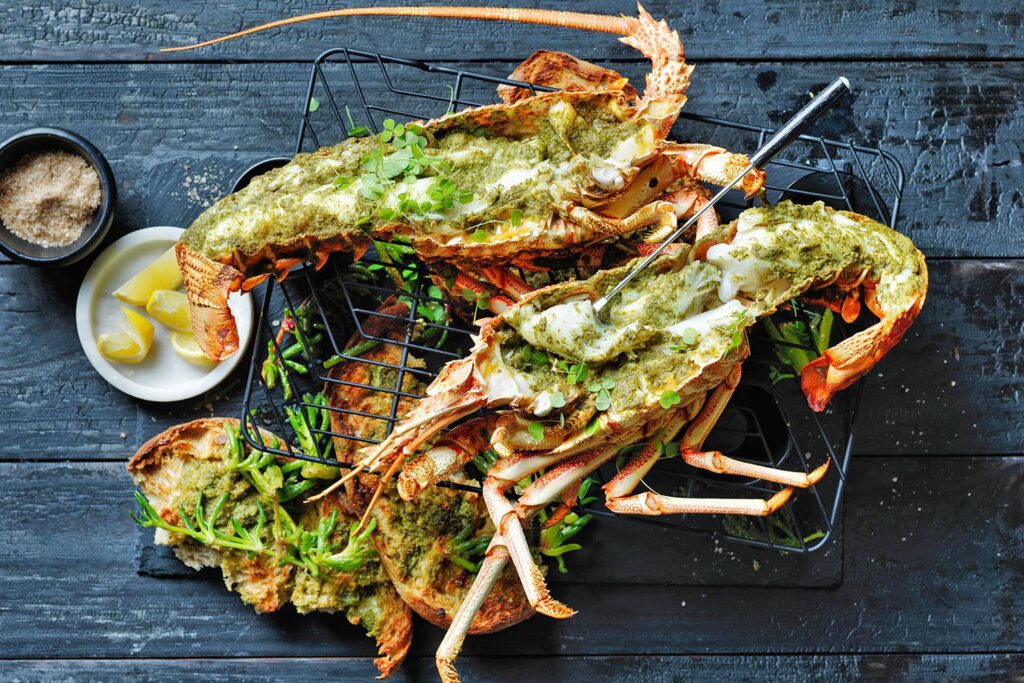
Here are a few ways you might savor lobster meat:
- Lobster Rolls: Chilled lobster meat mixed with mayonnaise, lemon juice, and fresh herbs, served in a butter-toasted roll.
- Lobster Thermidor: Lobster meat cooked in a rich white wine sauce, then stuffed back into its shell, topped with cheese and broiled until golden.
- Lobster Bisque: A creamy and velvety soup featuring pureed lobster meat, often finished with a splash of brandy or sherry.
- Lobster Salad: Lobster meat tossed with greens and a light dressing, perfect for a summer luncheon.
- Pasta with Lobster: Lobster meat adds luxury to pasta dishes, whether it’s a creamy lobster Alfredo or a refreshing lobster and cherry tomato spaghetti.
When preparing lobster, whether grilling, boiling, or sautéing, it’s crucial to not overcook the meat to maintain its tender quality. Lobster is also a nutritious addition to your diet; it’s a great source of protein, vitamins, and omega-3 fatty acids, with the bonus of being relatively low in calories and fat. Enjoying lobster is not only a treat for your taste buds but can also be an enriching culinary experience.


5 Things You Didn’t Know About Lobster Sizes
- Categories of Size
Lobster sizes can vary greatly, but they are often categorized by the industry as “chicken” (1 pound), “quarters” (1.25 pounds), “selects” (1.5 to 2.5 pounds), and “jumbos” (3 pounds and up). Each size category is used for different types of dishes and occasions. - Growth Rate and Age
Lobsters grow by molting, or shedding their shells, and can do so over 20 times in their first 5-7 years of life. This rate slows as they age. It is estimated that it takes about 5-7 years for a lobster to reach a marketable size of approximately 1 pound. - Regulations and Conservation
In many places, there are strict regulations on the size of lobsters that can be caught. For example, in Maine, the minimum size is a carapace length of 3 1/4 inches, while the maximum size limit is 5 inches to protect the breeding stock. - Giant Lobsters
The largest lobsters can live for over 100 years and have been known to reach weights of over 40 pounds. However, such giant lobsters are rare and are often released back into the water when caught, due to conservation efforts and because the meat quality is often considered tougher and less desirable. - Measurement Practices
The size of a lobster is traditionally measured not by its weight, but rather by the length of its body shell (the carapace), from the eye socket to the beginning of the tail. This method is preferred because it provides a more accurate indication of the meat content.
Lobster sizes are typically classified by weight as follows:

- Chickens: These lobsters weigh approximately 1 pound each.
- Quarters: Slightly larger, weighing about 1.25 pounds.
- Halves: Each lobster weighs roughly 1.5 pounds.
- Deuces: These lobsters weigh around 2 pounds each.
- Selects: Lobsters in this category range from 2 to 3 pounds.
- Jumbos: Any lobster that is larger than 3 pounds. Jumbo lobsters can reach up to 10 pounds or even more.
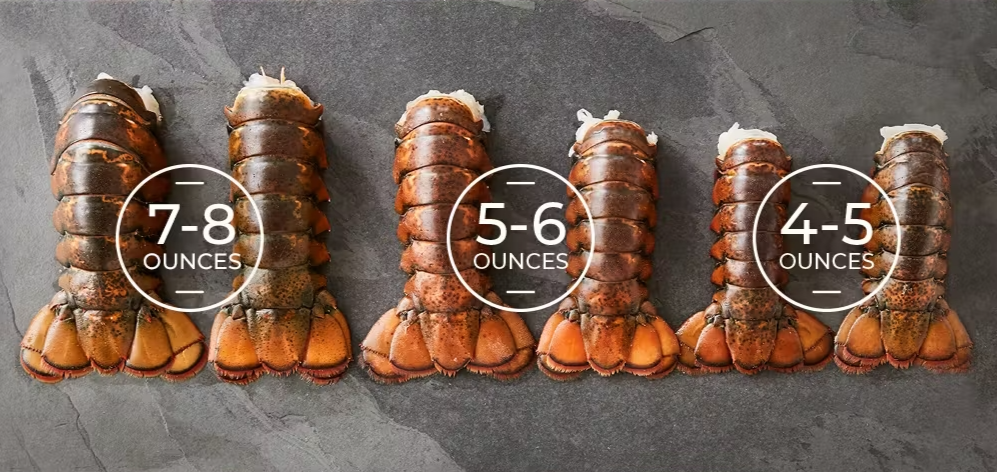
The size of a lobster can impact its taste and texture, with smaller lobsters often being more tender and sweet. The largest lobster recorded was caught in Nova Scotia, and it weighed 44 pounds and 6 ounces. Typically, most lobsters caught for consumption fall into the 1 to 3 pounds range.

